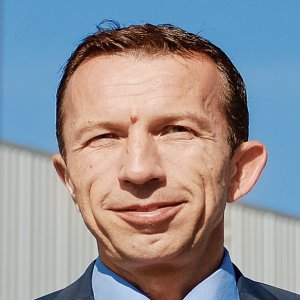Designing the Future Today

Q: How do you expect living habits to influence transportation and automobiles?
A: Growing population rates around the world will lead to significant changes in urbanized areas. Experts speculate that by 2025, there will be 50 megacities in the world having more than 10 million inhabitants. Mexico City and the metropolitan area already have a population greater than 25 million. Megacities demand distinct interactions, behavioral and consumption models. Of our employees, 10 percent work from home to avoid wasting time commuting in traffic. This saves them time that can be used more productively.
An aging population resulting from couples deciding to have fewer children has meant that younger generations are not growing quickly enough to fill labor demand. Medical advances have also prolonged life expectancy and the population unable to walk or cycle will grow in size, leading to greater dependence on cars. The market is responsible for developing technology to ensure that people can satisfy their mobility needs. Visual disabilities will also boost demand for autonomous cars to drive patients to their appointments and medical treatments.
These new tendencies will create new opportunities for businesses, along with technology that promotes efficiency and quality. Autonomous or self-driving cars are mistakenly considered gadgets but they will become a necessity to create cities without traffic and to allow an aging population to be more independent.
Q: In what ways will the industry need to adapt to changing mobility and automotive trends?
A: Stricter regulations will increase the cost of vehicles. Electrical applications are seen as a possible solution for pollution. This does not consider that 50 percent of this energy is generated from carbon and is more expensive. The price also relates to the number of units manufactured and if the required investment to develop these products is divided between few vehicles, costs spike. Technology that meets regulations will be more expensive and the only way to balance cost is by creating products with more mileage. We consider self-driving cars to be a product that can greatly improve the efficiency of fuel consumption.
We have also seen that owning a car is an expensive investment. A car remains parked most of its useful life. Our goal is to support the transport evolution through smart mobility such as uberPOOL, which finds up to four people to carpool. However, as long as customers enjoy car ownership, Ford will continue to produce vehicles. Private cars could be optimized if other drivers were allowed to use them to earn back the initial investment. The car could take its owner to work and afterward, the owner can choose to allow it to work with Uber or other similar apps. This would reduce stationary time and technology has proven it can achieve these mobility solutions.
The automotive industry requires challenging long-term strategies as development takes time. Ford’s current designs will not be launched until 2021, forcing our engineers and experts to imagine how we will live in the future. All industries are facing obstacles and we are creating strategies in response. Companies need to adjust the way they sell and deliver their products. 3-D printing will cause messenger services to disappear as files can be fed to a printer that can deliver the purchased product. Many doubt how soon this type of technology will become widespread but history suggests that technology changes quickly.
Q: How do you expect the automotive industry to behave in the future?
A: Mexico will continue being an attractive investment destination for the automotive industry and manufacturing in general. Its size, commercial openness and growth in production make Mexico an interesting investment hub. The government can boost expansion, building on its 40 commercial agreements to ensure a bright future. NAFTA needs to be reconsidered as a live agreement with fixed conditions to be corrected, such as the transnational truck crossing approvals that detract from our industry. The automotive industry can also create contracts with more suppliers to attract more business to Mexico.




















